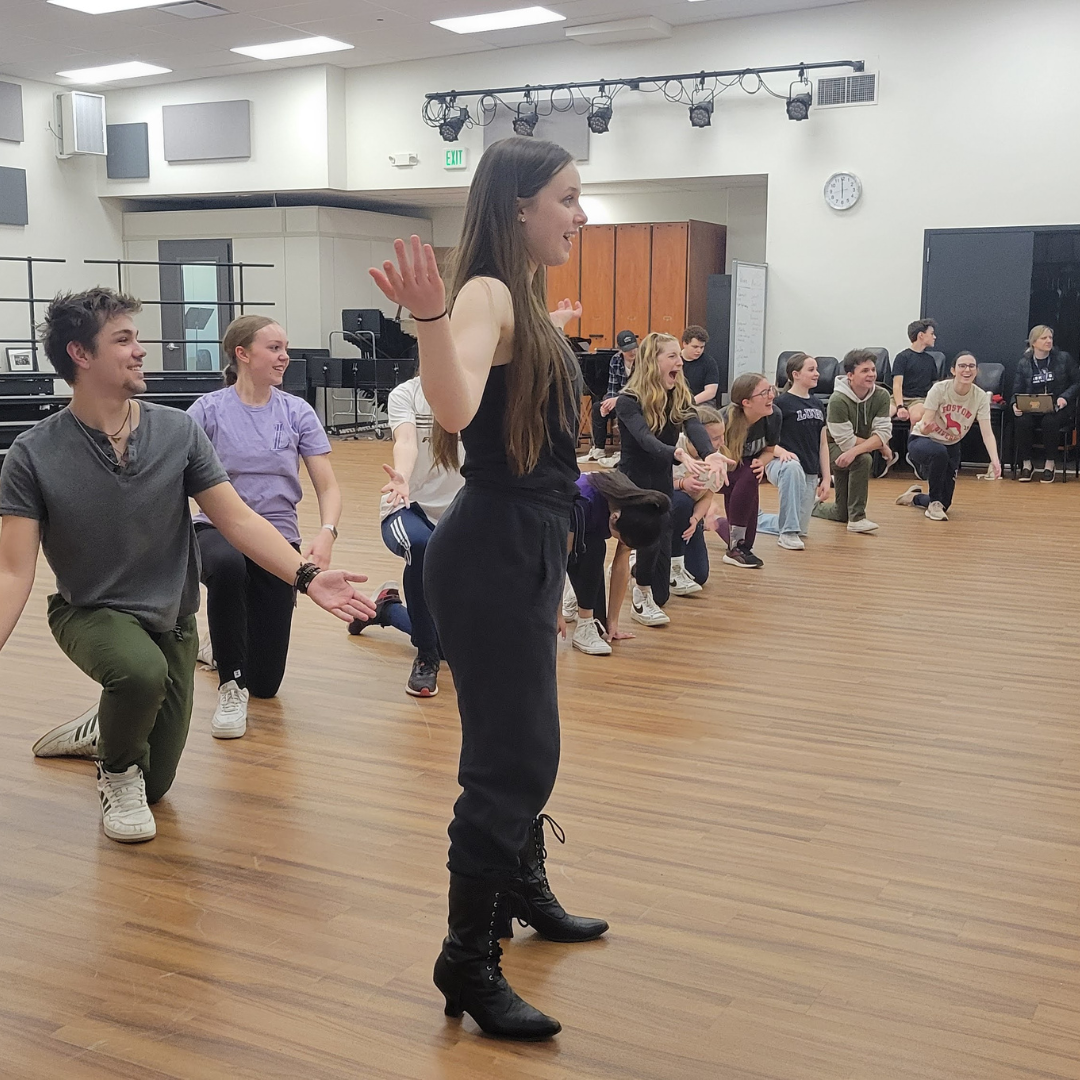7 Myths About High-School Strength Training
Coach Nate Smock shares insights about what does and doesn’t help student athletes thrive in high school sports.
BY Hannah Buchholz
Strength training can be one of the most formative parts of a student’s high-school experience. The caveat is that it needs to be done wisely. Coach Nate Smock, LuHi Director of Strength & Conditioning and one of our assistant football coaches, shares 7 of the most common misconceptions he hears. To hear the whole conversation with Coach Smock, where he gets into the science behind in-season and out-of-season training, check out this episode of the LuHi pod.
Myth 1: “Lifting stunts your growth.”
Reality: Research doesn’t support this. What does raise risk is poor technique and inappropriate loading. At LuHi, freshmen learn movement quality first. For weight room first-timers, Coach Smock teaches students how to squat, hinge, lunge, push, pull, sprint, and change direction. It can be tempting to show off to classmates how much weight you can get on a bar, but that’s usually counterproductive. Coach Smock encourages students to think of the weight room like learning a new language: students master the alphabet and vocabulary (fundamentals) before writing essays (advanced training).
Myth 2: “Strength work makes athletes tight and less mobile.”
Reality: With full-range, technique-driven training, mobility can actually improve. Many strains happen not because athletes are “too big,” but because tissues are too weak for the demands of sport. Building strength protects joints and reduces injury risk.
Myth 3: “Never lift on game day or in season.”
Reality: Year-round athletes (think soccer, volleyball, lacrosse) often compete 9+ months a year. If they never train in season, they plateau. The solution isn’t max-effort workouts the day of competition. Instead, Coach Smock programs smart, well-timed maintenance. Here’s how athletes lose strength and power over time:
- Power decays fastest (in about 3 days)
- Max strength decays next (in about 7–10 days)
- Hypertrophy/size holds longer (for about 21–24 days)
- Aerobic conditioning lasts the longest (for about 28–30 days)
That’s why Coach Smock touches power mid-week for Friday-night sports (such as medicine-ball throws), places heavier strength earlier in the week, and avoids soreness-inducing eccentric work right before competition. For large, mixed-sport groups, he favors safe, explosive patterns (e.g., hex-bar jumps, DB step-ups) that keep athletes primed without creating fatigue.
Myth 4: “More is always better.”
Reality: Students playing club sports can be a tricky line to walk in a high school weight room. There’s just as high a chance as athletes are being overtrained as they are of being undertrained. Plus, from student to student, so many factors such as nutrition and sleep also play a role in an athlete’s performance. The goal is the right dose: enough strength and power to raise performance, with recovery built in so athletes avoid burnout and injury.
Myth 5: “Varsity, JV, and freshmen should train the same way.”
Reality: LuHi programs by training age and competitive demands. Varsity athletes need to peak for near-term performance but JV and freshmen are in a developmental phase. Coach Smock focuses on building their foundation for the next two years. That means different volumes, intensities, and expectations.
Myth 6: “Strength coaches should run sport-specific practices.”
Reality: Sport skills are for sport coaches. The strength room is about general physical preparation. Said another way, it’s the capacities every athlete needs regardless of spor. These include:
- force production,
- coordination,
- posture,
- sprint mechanics,
- deceleration,
- change of direction,
- and resilience.
Better general capacity leads to a higher ceiling for sport-specific skill.
Myth 7: “If you don’t feel wrecked, it didn’t work.”
Reality: Soreness really isn’t the metric. Progress is. LuHi emphasizes repeatable training, small weekly tweaks, and steady progression. Like a well-structured practice plan, the weight-room routine stays consistent enough to build skill, strong enough to drive adaptation, and flexible enough to honor game schedules.
What Really Drives Progress (The LuHi Approach)
- Fundamentals first. Master the big rocks: squat, hinge, lunge, push, pull, sprint, jump, land, cut. Consistency beats novelty.
- Intelligent in-season planning.
- Early in the week: heavier strength or higher-rep “size” work (when appropriate)
- Mid-week: power tune-up (fast, low-soreness, nervous-system priming) and mobility, core, mental prep, walk-throughs
- Game days: feel great, not fried
- Train for the long game. Freshmen and sophomores are sponges. Progress can be fast. Juniors and seniors still improve, but gains depend more on lifestyle habits (sleep, hydration, eating in the heat) plus focused, well-timed training.
For parents, Coach Smock says they can best support their athletes by helping them manage nutrition and sleep. For students, his best advice is to be coachable.
Building stronger athletes isn’t about chasing fads.
It’s about mastering the fundamentals and respecting the science of adaptation. At LuHi, Coach Smock’s program does exactly that so students can compete well, stay healthy, and raise their ceiling year after year.
Want more? Listen to the full conversation with Coach Smock on the LuHi Pod: “Myths About Strength Training in High School.”

.png)

